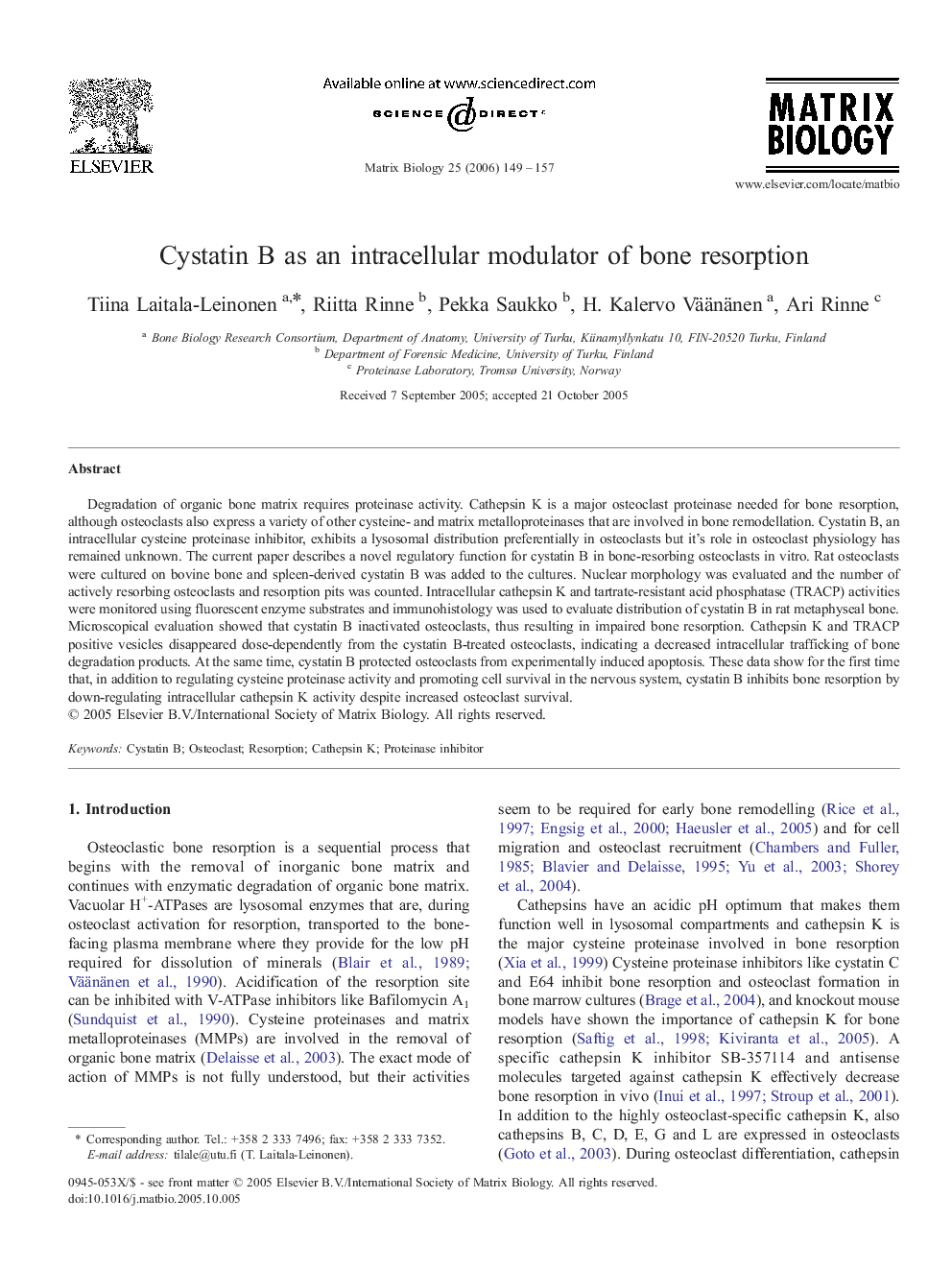| Article ID | Journal | Published Year | Pages | File Type |
|---|---|---|---|---|
| 2145437 | Matrix Biology | 2006 | 9 Pages |
Degradation of organic bone matrix requires proteinase activity. Cathepsin K is a major osteoclast proteinase needed for bone resorption, although osteoclasts also express a variety of other cysteine- and matrix metalloproteinases that are involved in bone remodellation. Cystatin B, an intracellular cysteine proteinase inhibitor, exhibits a lysosomal distribution preferentially in osteoclasts but it's role in osteoclast physiology has remained unknown. The current paper describes a novel regulatory function for cystatin B in bone-resorbing osteoclasts in vitro. Rat osteoclasts were cultured on bovine bone and spleen-derived cystatin B was added to the cultures. Nuclear morphology was evaluated and the number of actively resorbing osteoclasts and resorption pits was counted. Intracellular cathepsin K and tartrate-resistant acid phosphatase (TRACP) activities were monitored using fluorescent enzyme substrates and immunohistology was used to evaluate distribution of cystatin B in rat metaphyseal bone. Microscopical evaluation showed that cystatin B inactivated osteoclasts, thus resulting in impaired bone resorption. Cathepsin K and TRACP positive vesicles disappeared dose-dependently from the cystatin B-treated osteoclasts, indicating a decreased intracellular trafficking of bone degradation products. At the same time, cystatin B protected osteoclasts from experimentally induced apoptosis. These data show for the first time that, in addition to regulating cysteine proteinase activity and promoting cell survival in the nervous system, cystatin B inhibits bone resorption by down-regulating intracellular cathepsin K activity despite increased osteoclast survival.
